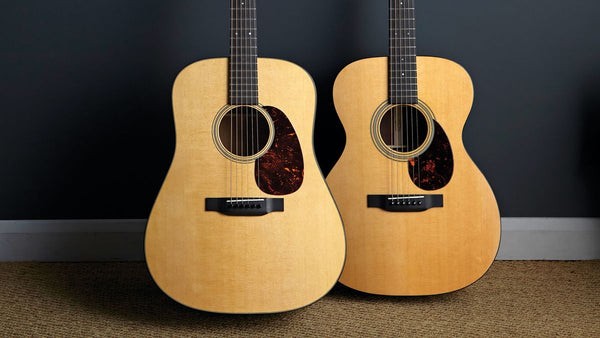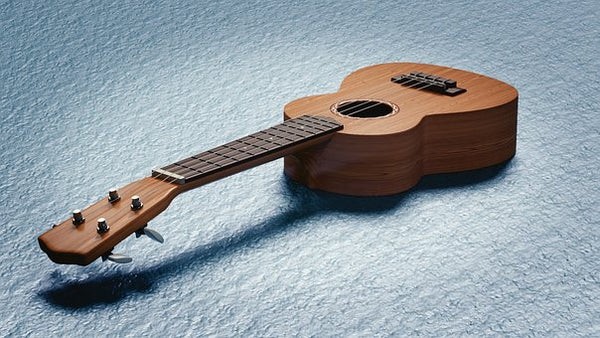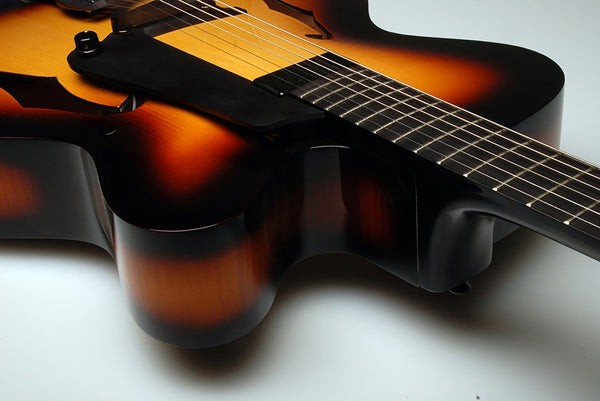Studio Monitors: The Ultimate Buying Guide
Studio monitor speakers, often referred to simply as "studio monitors," are a cornerstone of the professional audio world. They are designed with one primary goal in mind: to provide an accurate and uncolored representation of audio. Unlike consumer-grade speakers that may enhance or color sound to make it more appealing to the listener, studio monitor speakers are engineered to be transparent and faithful to the source material.
These speakers are indispensable tools for a range of audio-related activities, from music production and mixing to film post-production and sound engineering. Their accuracy and precision make them a critical component for anyone who relies on their ears to create and refine audio content.
In the realm of professional audio production, whether it's music, podcasts, film soundtracks, or any other audio-related project, the choice of studio monitors can make or break the quality of the final product. Studio monitors act as the ears of the audio engineer, providing a clear and unaltered representation of the sound being worked on. The decisions made while mixing or mastering audio largely depend on what is heard through these speakers. Therefore, it's vital to choose studio monitor speakers that can be trusted to faithfully reproduce the nuances and subtleties of the audio being created or edited.
The Impact of Choosing the Right Studio Monitor Speakers
The choice of studio monitor speakers directly affects the quality and accuracy of the audio work being produced. If you select the right studio monitors, they become a reliable tool that helps you craft pristine audio. However, if you make an ill-informed choice, the inaccuracies and colorations introduced by the speakers can lead to critical errors in the audio you're working on. These errors can range from imbalance in the mix to an inaccurate representation of frequency ranges, which can cause problems when played on different audio systems.
The right studio monitors can reveal issues in your audio that might not be apparent when using lesser-quality speakers. They allow you to pinpoint and address problems in the mix, ensuring the final product sounds great across various playback systems.
When making the right choice, you're investing in a tool that not only helps you create superior audio but also serves as an essential part of your audio production setup for years to come. It's not merely a purchase; it's an investment in the quality of your work and the satisfaction of your audience.
Overview of the Guide's Scope
This comprehensive guide aims to provide you with the knowledge and insights you need to make an informed decision when selecting studio monitor speakers. We'll cover a wide array of topics, from understanding the different types of studio monitors to diving into technical specifications, room acoustics, and budget considerations. By the end of this guide, you'll be well-equipped to choose the perfect studio monitor speakers that align with your needs and budget, ensuring that your audio projects sound their best.
What are Studio Monitor Speakers?
Studio monitor speakers, often called studio monitors or reference monitors, are specialized loudspeakers designed for the critical task of accurately reproducing audio. Unlike regular speakers, which may be tailored to enhance audio for casual listening, studio monitors aim to deliver unaltered and transparent sound. These speakers serve as an essential tool in audio production, recording, and mixing environments.
Studio monitors come in various shapes and sizes, ranging from compact nearfield monitors to larger midfield and main monitors. They are built to provide precise audio representation, allowing audio professionals to hear the most subtle details, flaws, and nuances in their work.
How Do Studio Monitors Differ from Regular Speakers?
The primary difference between studio monitors and regular speakers lies in their intended purpose and design philosophy:
Transparency: Studio monitors are designed to be sonically transparent, meaning they reproduce audio without adding coloration or enhancements. This allows audio engineers to make accurate judgments about the quality of the audio being produced.
Flat Frequency Response: Unlike regular speakers, which may emphasize bass or treble frequencies to enhance music for casual listening, studio monitors aim for a flat frequency response. They should faithfully reproduce all frequencies without any artificial boosts or cuts.
Critical Listening: Studio monitors are engineered for critical listening. They reveal even the smallest imperfections in audio, enabling precise adjustments during mixing, mastering, or sound design.
Shielded Cabinets: Many studio monitors have shielded cabinets to prevent electromagnetic interference with nearby electronic equipment, making them suitable for use in close proximity to computer screens and other audio gear.
Multiple Input Options: Studio monitors often provide a variety of input options, including XLR, TRS, and RCA connectors, allowing compatibility with a wide range of audio sources.
The Role of Studio Monitors in Professional Audio Production
Studio monitors play a fundamental role in professional audio production across various fields, including music, film, television, and multimedia content creation. Their roles can be summarized as follows:
Precision Mixing: Audio engineers use studio monitors to mix and balance tracks with the highest accuracy. A flat and uncolored sound ensures that what they hear is a faithful representation of the recorded material.
Critical Listening: Studio monitors reveal imperfections and artifacts that might go unnoticed with consumer-grade speakers. This allows engineers to make precise adjustments to ensure audio quality.
Quality Control: Audio professionals rely on studio monitors to assess the quality of audio in the mastering process, ensuring it sounds great on a wide range of playback systems.
Sound Design: In the field of sound design for film, games, and multimedia, studio monitors are crucial for crafting immersive audio experiences with precision.
In essence, studio monitors are the ears of audio professionals, helping them create, refine, and produce audio content that meets the highest standards of quality and accuracy. They are an indispensable tool for anyone working in the audio production industry.
Types of Studio Monitor Speakers
Active vs. Passive Studio Monitors
Active (Powered) Speakers
Active studio monitors, often referred to as powered studio monitors, have built-in amplifiers, which means each driver (woofer, tweeter, etc.) has its own dedicated amplifier. This integrated amplification simplifies the setup process, as there's no need for an external amplifier. Active studio monitors are usually connected directly to audio sources, making them a more convenient choice for many users.
Active studio monitors are known for their precision and consistency in delivering sound, as the amplifier is specifically matched to the speaker's design. This results in accurate sound reproduction, which is crucial in professional audio production.
Passive Speakers
Passive studio monitors, on the other hand, do not have built-in amplifiers. Instead, they require an external amplifier to power them. This means that you have more control over the amplifier choice, but it also adds complexity to the setup process.
Passive studio monitors are often favored for their flexibility, as users can select amplifiers that match their preferences and requirements. However, it's essential to ensure that the amplifier's power output and characteristics are well-matched to the passive monitors for optimal performance.
The choice between active and passive studio monitors often depends on individual preferences, setup requirements, and the desired level of control over the audio chain.
Nearfield vs. Midfield Studio Monitors
Nearfield Studio Monitors
These are designed for close listening, typically positioned within a meter or two from the listener. They are compact and ideal for small to medium-sized studio spaces. Nearfield monitors excel at revealing intricate details and are commonly used for critical tasks like mixing and editing. Their sound is direct and focused, making them suitable for individual workstations
Midfield Studio Monitors
Midfield monitors are larger and are typically positioned further away, around 1.5 to 4 meters from the listener. They are suited for larger studios where more extended listening distances are necessary. Midfield monitors offer a broader soundstage and are often used for assessing the overall balance of a mix, mastering, and other high-level audio production tasks. They can handle higher sound pressure levels, making them suitable for larger spaces and more extended listening periods
The choice between nearfield and midfield studio monitors depends on your studio size, listening distance, and the specific audio production tasks you need to perform.
Subwoofers and Low-Frequency Extension
The Role of Subwoofers in Studio Monitoring:
Subwoofers are specialized speakers designed to reproduce low-frequency sounds, commonly referred to as bass. They are a valuable addition to a studio monitoring setup for several reasons:
Extended Low-Frequency Response: Subwoofers enhance the low-frequency extension of studio monitors, allowing you to hear and work with deep bass frequencies accurately.
Precision in Bass Management: Subwoofers help manage the bass frequencies more effectively, reducing the strain on the main studio monitors.
Enhanced Sound Quality: Subwoofers can contribute to a more balanced and immersive sound experience, especially in music and film production.
When to Consider Subwoofers:
Subwoofers are particularly useful when:
Working on music genres with prominent bass elements, such as electronic dance music or hip-hop.
Focusing on sound design for multimedia where deep bass is essential for creating impactful audio.
Creating content for home theaters or other applications where a full, immersive sound experience is required.
However, it's important to note that subwoofers should be carefully integrated into your studio setup to maintain a balanced and accurate sound. Proper positioning, crossover settings, and calibration are essential for achieving the best results. The decision to add a subwoofer depends on your specific audio production needs and your room's acoustics.
Technical Specifications to Consider
Frequency Response
Frequency response refers to the range of frequencies a studio monitor can accurately reproduce.
Consider a amonitor with a flat and wide frequency response, covering the full audible spectrum (typically 20 Hz to 20 kHz). This ensures that no crucial audio information is missed during production or playback.
Pay attention to the tolerance range (± dB) across the frequency spectrum, as a flatter response within this range indicates more accurate sound reproduction.
Power and Amplification
Power rating in studio monitors signifies the amplifier's output power, often specified in watts (W). Higher wattage doesn't necessarily mean better quality, but it can provide higher volume levels.
Amplification type (Class A, Class AB, Class D, etc.) impacts the efficiency and sound quality. Class D amplifiers, for instance, are energy-efficient and generate less heat.
Ensure that the amplifier's power matches the speaker's requirements for optimal performance without distortion or damage.
Impedance
Impedance, measured in ohms (Ω), represents the resistance to electrical current in the speaker. Studio monitors typically have an impedance of 4, 6, or 8 ohms.
Ensure your amplifier and studio monitors have compatible impedance ratings to prevent overloading or underpowering issues. Mismatched impedances can degrade sound quality and even damage equipment.
Sensitivity
Sensitivity, usually measured in decibels (dB), tells you how efficiently the studio monitor converts the electrical power into sound.
Higher sensitivity means the speaker produces more sound from the same amount of input power, making it louder and more efficient.
A studio monitor with suitable sensitivity for your workspace can save on power usage while providing ample volume.
Driver Size and Type
Studio monitors consist of various drivers, including woofers, tweeters, and sometimes mid-range drivers.
The size and type of drivers affect the frequency range each monitor can reproduce accurately. Larger woofers excel at low frequencies, while smaller drivers handle mids and highs.
Different driver materials (e.g., paper, Kevlar, aluminum) impact sound characteristics. It's essential to consider the driver design and material for the specific sound profile you desire.
Connectivity Options
Studio monitors typically offer a variety of input options, including XLR, TRS, RCA, and even digital inputs like SPDIF or AES/EBU.
Choose a studio monitor with connectivity options that match your audio sources and existing equipment.
Balanced connections (e.g., XLR and TRS) are preferable for professional applications as they reduce interference and noise.
Acoustic Treatment and Room Considerations
Studio monitor performance is greatly affected by the room's acoustics, including issues like reflections, standing waves, and bass traps.
Acoustic treatment, such as absorption panels and diffusers, can help optimize sound quality and minimize unwanted reflections in your listening environment.
Positioning your studio monitors correctly and considering room dimensions can further improve sound accuracy. Room correction software and measurement tools may also be employed to fine-tune the acoustic environment.
Taking these technical specifications into account and addressing room-related considerations will help you choose studio monitors that best suit your audio production needs and create an environment where they can perform optimally.
Popular Studio Monitor Speaker Brands
KRK Systems: Known for their Rokit series, KRK offers affordable studio monitors with a wide range of options for different budgets.
Yamaha: Yamaha's HS series and NS-10M studio monitors have been industry standards for decades, known for their accuracy and durability.
Adam Audio: Renowned for their ribbon tweeter technology, Adam Audio studio monitors provide excellent clarity and detail.
Presonus: Presonus offers a range of studio monitors, including the Eris and Sceptre series, known for their affordability and value.
Vault: Vault studio monitors are acclaimed for their innovative design and exceptional sound quality.
Mackie: Mackie studio monitors are budget-friendly and suitable for home studios and entry-level setups.
Our Curated List of Studio Monitor Speakers
Entry-Level Audio Interfaces
Entry-Level Monitors: If you're just starting out or have budget constraints, consider affordable options from brands like Mackie, Behringer, and JBL. These can provide good value for those on a tight budget.
Mid Range Audio Interfaces
Brands like KRK, Presonus, and Yamaha offer studio monitors at mid-range prices, striking a balance between quality and affordability. These are suitable for home studios and semi-professional setups
Used and Open Box Studio Monitors
You can find excellent deals on used or open-box studio monitors. Bajaao's Used Gear platform provides access to a variety of used studio monitor speakers, and many of these offerings include products from well-known and respected brands in the audio industry. This selection can include active and passive studio monitors, nearfield and midfield monitors, and even subwoofers, catering to the needs and preferences of audio enthusiasts and professionals.
Studio Monitor Accessories
Isolation Pads and Stands
Isolation pads and stands are essential for reducing vibrations and isolating studio monitors from surfaces.
Isolation pads (foam or rubber) minimize resonance and improve sound clarity.
Stands and brackets allow for precise positioning and angling of the monitors to achieve the optimal listening height and angle.
Cables and Connectors
High-quality audio cables and connectors are crucial for maintaining signal integrity.
Balanced XLR, TRS, or RCA cables are common choices, and it's essential to use appropriate cable lengths to reduce clutter and signal loss.
Consider cable management solutions to keep your workspace tidy and organized.
Calibration Tools and Software
Room calibration tools and software help optimize the sound in your studio space.
Tools like measurement microphones and software packages (e.g., Sonarworks, ARC System) analyze room acoustics and adjust the monitor's output to compensate for room-related issues.
Calibration ensures more accurate audio monitoring, especially in acoustically challenging environments.
Maintenance and Care
Keeping Your Studio Monitors Clean
Regularly clean the speaker cones and cabinet surfaces using a soft, lint-free cloth. Avoid abrasive materials that could damage the finish.
Use compressed air or a blower to remove dust from grilles and drivers without touching them.
Cleaning helps maintain the appearance of your studio monitors and ensures no foreign particles affect the sound quality.
Handling and Storage Tips
When moving or storing studio monitors, handle them with care to prevent damage.
Use protective covers or cases for transport and storage to shield them from potential accidents or environmental factors.
Store monitors in a controlled environment with stable temperature and humidity to prevent damage to the components.
Troubleshooting Common Issues
Familiarize yourself with common studio monitor issues, such as buzzing, distortion, or imbalance.
Learn to diagnose and troubleshoot these issues, which might involve checking cables, connections, and room acoustics.
-
Seek professional help or refer to the manufacturer's support if issues persist.
Conclusion
In this comprehensive guide, we've covered a wide range of essential aspects of studio monitor speakers. We've explored the significance of studio monitors, the types available, technical specifications to consider, room acoustics, brand and model research, and the role of accessories. We've also delved into the importance of maintenance and care.
Investing in quality studio monitor speakers is an investment in the accuracy and precision of your audio work. The right choice can enhance the clarity of your audio production and ensure that your work sounds great on a variety of playback systems. Quality studio monitors provide a dependable tool for audio professionals to make informed decisions during mixing, mastering, and sound design.
As you embark on your journey to select the perfect studio monitor speakers, we encourage you to make an informed decision. Consider your specific needs, budget, and room acoustics. Research different brands and models, read reviews, and, if possible, audition the speakers in your workspace. By doing so, you'll ensure that your investment in studio monitors aligns perfectly with your goals and delivers the audio quality and accuracy you demand. Happy listening and productive audio production!


 Used Gear
Used Gear
 Connect
Connect


























